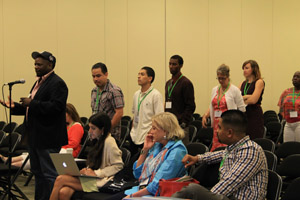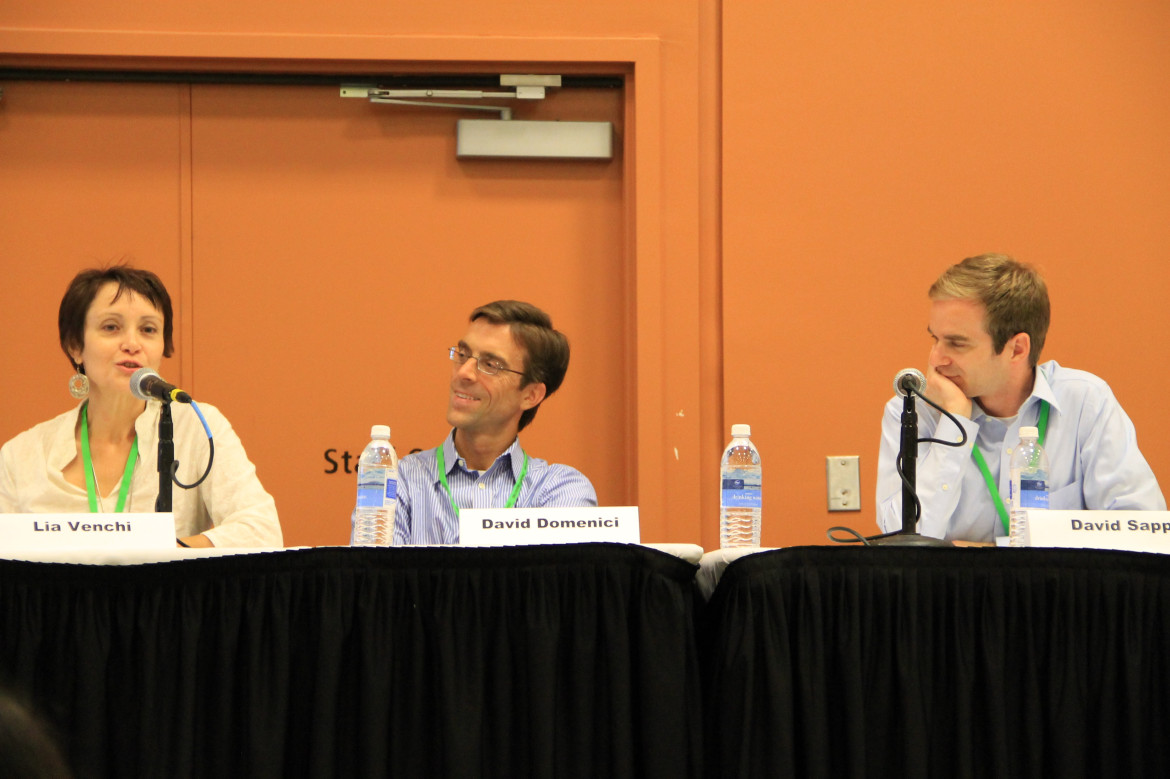
Left to Right: Teacher Lia Venchi, David Domenici of the See Forever Foundation, and David Sapp of the ACLU
CINCINNATI - Learning can be difficult under the best of circumstances. But for those young people inside the nation’s youth detention centers, the barriers to learning can be enormous indeed.
This was just one of the messages that came out of a panel discussion at a conference in Cincinnati today sponsored by the Children’s Defense Fund, the first such large-scale meeting of the child advocacy organization in a decade.
The panel, Meeting the Educational Needs of Children in the Juvenile Justice System: Challenges and Opportunities, concentrated on highlighting problems and introducing ideas for reforming detention center school systems.
Panelists, including David Sapp of the American Civil Liberties Union, Lia Venchi, a teacher at a school for youth in detention and David Domenici, a member of the See Forever Foundation, said most of the reforms implemented in schools within juvenile justice facilities have been forced as a result of litigation or administrative complaints, making public attention the biggest force for change in what are usually highly secretive environments.
The children who attend school in juvenile justice detention facilities have much higher needs than those in the general population, the panelists said. These needs include disproportionately higher rates of learning disabilities, mental health disorders, and lower reading and math proficiencies. They are also disproportionately made up of African-American, Hispanic and other minority youth, panelists said.
Most schools within juvenile justice centers are ill equipped to deal with these high-needs students, a challenge that is often made even harder by the presence of high security measures, said David Sapp, an ACLU attorney based in Los Angeles. Worse, they are often staffed with unmotivated teachers who lack administrative oversight, panelists said.

Audience members lining up to ask questions after the panel discussion
Sapp outlined four main challenges to providing a quality education to juveniles in detention:
- Security. Security measures often determine the level of enrichment and academic programming juveniles receive. “Even just getting students to and from class on time can sometimes be a barrier in this setting,” Sapp said.
- The number of agencies involved. Detention facilities can often be run by one agency and have their educational services run by another. This creates “a crazy network” of administrative oversight, Sapp said, and the lack of communication between agencies can become the biggest barrier to an effective education program.
- The high rates of special needs and mental health needs for students in the system. It’s hard to address these needs adequately given high security, lack of inter-agency communication and poor instructor quality.
- Lack of public awareness or will. “These are kids that a lot of people would rather forget about,” Sapp said. It becomes a case of “out of sight, out of mind,” especially most people will never actually get to enter a detention facility and learn about the reality of its conditions, he said.
Calling public attention to the conditions inside facilities is especially important because many of them are out of the public eye and are very good at keeping information private, Sapp said.
“If you’re on in the inside or know someone who is, be willing to talk about what you’ve seen,” Sapp said. “Call a reporter. And say, hey, I was in this facility and you will not believe what I saw.”
Photos courtesy of Kaukab Jhumra Smith.


We as a society have adopted an acceptance that kids in crisis deserve unequal and poor treatment. Lousy for them is okay. If we as a nation really wanted to fix this problem we would. This country and every community allows us to throw kids away. These kids are too difficult and get thrown away. THE ONLY HOPE IS TIME… If in time these throw away kids decide for themselves to reach out for our help they will change. How do you force an addict to change? How do you force a gang-banger to change? You don’t force them; they must want to change.
When Lou Holtz was head coach a Notre Dame, he was asked “How do you motivate your players.” His answer is classic. He said, “I try not to de-motivate them.” If we want things to change, we must change. We must care enough to motivate staff, and conflicting agencies, parents, and the kids to get on the same page. Churches, businesses, politicians, and all levels of government must applaud the efforts and kids that decide to change. They have to become valued and important. We must stop throwing kids away. We must start to work together. Are there any statesmen left in this country? Is there any leadership out there? Does anyone understand what has happened to the American Dream? If you are in detention, you can forget about college, the best you hope for is to survive and make it to 21 years of age.